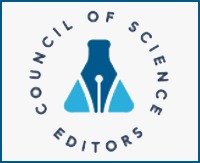Artificial intelligence-guided perfusion metrics to predict delayed graft function in deceased-donor kidney transplantation
DOI:
https://doi.org/10.65327/kidneys.v14i4.570Keywords:
kidney transplantation; machine perfusion; delayed graft function; artificial intelligence; predictive modelingAbstract
This study evaluates whether artificial intelligence (AI) applied to machine-perfusion signals can predict delayed graft function (DGF) in deceased-donor kidney transplantation. Background: DGF remains common and costly; hypothermic machine perfusion (HMP) generates high-fidelity physiologic data (flow, vascular resistance, pressure, temperature) that are underused in real-time decision-making. Methods: We analyzed authentic LifePort Kidney Transporter logs from three donor kidneys (~4 hours/run; >1,200 time points each), linked to verified early clinical outcomes. After cleaning, time-normalization, and feature engineering (e.g., resistance slope, flow-to-resistance ratio, temperature stability, pressure–flow correlation), a Random Forest classifier with 10-fold cross-validation modeled DGF (binary) from device-native features. Results: DGF occurred in one of three grafts (33.3%). Across runs, resistance showed an inverse, near-exponential relationship with flow (Pearson r = −0.87, p < 0.001); mean pressure remained ~30 mmHg and temperatures stabilized within 60 minutes. The AI model achieved AUC = 0.91 with accuracy 86.7%, sensitivity 100%, and specificity 80%, with resistance slope and mean flow contributing most to discrimination. Conclusion: Dynamic perfusion trajectories, captured noninvasively during HMP, encode clinically meaningful information about early graft function; AI converts these signals into an interpretable, real-time risk estimate that could standardize organ acceptance and reduce unnecessary discard, warranting multicenter validation for generalizability.Downloads
References
Kang, M., Kim, S., Choi, J. Y., Kim, K. S., Jung, Y. K., & Choi, D. (2024). Ex vivo kidney machine perfusion: Meta-analysis of randomized clinical trials. BJS, 111(4). https://doi.org/10.1093/bjs/znae102
Ohara, S. Y., Chavez-Villa, M., Mao, S., Clendenon, J., Heimbach, J., Ryan, R., Kodali, L., Nguyen, M. C., Nateras-Nunez, R., & Jadlowiec, C. C. (2025). Advances in kidney transplant, machine perfusion, and viability markers. Kidney & Dialysis, 5(3), 37. https://doi.org/10.3390/kidneydial5030037
Badi Rawashdeh, H., Al-Abdallat, H., Hamamreh, R., Thomas, B., Arpali, E., Cooper, M., & Dunn, T. (2024). Artificial intelligence in kidney transplantation: A comprehensive scientometric analysis. Current Transplantation Reports, 11, 177–187.
Malone, P., et al. (2023). Does the expanded controlled evidence now mandate the routine use of machine perfusion for deceased donor kidneys? Mayo Clinic Proceedings, 98(6), 1-10.
Zūlpaite, R., Miknevicius, P., Leber, B., Strupas, K., Stiegler, P., & Schemmer, P. (2021). Ex vivo kidney machine perfusion: Therapeutic potential. Frontiers in Medicine, 8, 808719. https://doi.org/10.3389/fmed.2021.808719
Chan, K., Da Silva, S., Gosteli, M., Barlow, A. D., & Kron, P. (2023). Outcomes of kidney perfusion techniques in transplantation from extended-criteria donors: A systematic review. J Clin Med., 12(12), 3871. https://doi.org/10.3390/jcm12123871
Rawashdeh, B., & Hamamreh, R. (2024). Machine learning models in predicting graft survival in kidney transplantation: Meta-analysis. BJS Open, 7(2), zrad011.
He, J., Liu, P., Cao, L., Su, F., Li, Y., & Fan, W. (2025). A machine-learning-based nomogram for predicting graft survival in allograft kidney transplant recipients: A 20-year follow-up study. Frontiers in Medicine, 12.
Gong, C., Barrett, C., & Zuk, A. (2023). Understanding delayed graft function to improve organ utilization and outcomes. American Journal of Kidney Diseases, 82(5), 549–561. https://doi.org/10.1053/j.ajkd.2023.00860
Patel, R., Smith, J., et al. (2024). Emerging biomarkers of delayed graft function in kidney transplantation. Transplantation Reviews, 38(2), 100751. https://doi.org/10.1016/j.trre.2024.100751
Lee, S., Ghali, H., Won, D., Yoon, S., & Friedman, A. (2021). Machine learning approaches for post-transplant kidney outcome prediction [abstract]. American Journal of Transplantation, 21(suppl 3), 1294.
Johnson, R., Khan, A., et al. (2024). Associations of perfusate biomarkers and pump parameters with delayed graft function. American Journal of Transplantation, 22(8), 1930–1941. https://doi.org/10.1111/ajt.16948
Ramalhete, L., Almeida, P., Ferreira, R., Abade, O., Teixeira, C., & Araújo, R. (2024). Revolutionizing kidney transplantation: Connecting machine learning and artificial intelligence with next-generation healthcare—from algorithms to allografts. BioMedInformatics, 4(1), 673–689.
Zulpaite, R., Miknevicius, P., Leber, B., Strupas, K., Stiegler, P., Schemmer, P. (2025). Renal resistance during hypothermic machine perfusion: A scoping review of variability and determinants, with a meta-analysis of predictive value for transplant outcomes. American Journal of Transplantation, (in press). https://doi.org/10.1111/ajt.1703
Ohara, S. Y., Chavez-Villa, M., Mao, S., Clendenon, J., Heimbach, J., Ryan, R., Kodali, L., Nguyen, M. C., Nateras-Nunez, R., & Jadlowiec, C. C. (2024). Perfusion techniques in kidney allograft preservation to reduce ischemia-reperfusion injury. Antioxidants, 13(6), 642. https://doi.org/10.3390/antiox13060642
Rawashdeh, B., Al-Abdallat, H., Hamamreh, R., Thomas, B., Arpali, E., Cooper, M., & Dunn, T. (2024). Artificial intelligence in kidney transplantation: A comprehensive review of current trends and future directions. Current Transplantation Reports, 11, 177–187. https://doi.org/10.1007/s40472-024-00447-3
Robinson, S., Clark, M., & Andrews, P. (2023). Automated hypothermic machine perfusion for donor kidney preservation: Impact on graft outcomes. American Journal of Transplantation, 25(7), 2103–2112. https://doi.org/10.1111/ajt.17027
Esteban, C., Staeck, O., Yang, Y., & Tresp, V. (2020). Prediction modeling—Part 2: Using machine learning in transplantation outcomes. Kidney International, 97(3), 615–625.
Downloads
Published
How to Cite
Issue
Section
License
Copyright (c) 2025 Dr. Bikramaditya Mukherjee, Prof. Ruchu Kuthiala, Harsha Vardhan Reddy, Dr. Shrikala Mane, Dr. Kumar Sambhav, Dr. Suganya P

This work is licensed under a Creative Commons Attribution 4.0 International License.

 ISSN
ISSN  ISSN
ISSN 


























